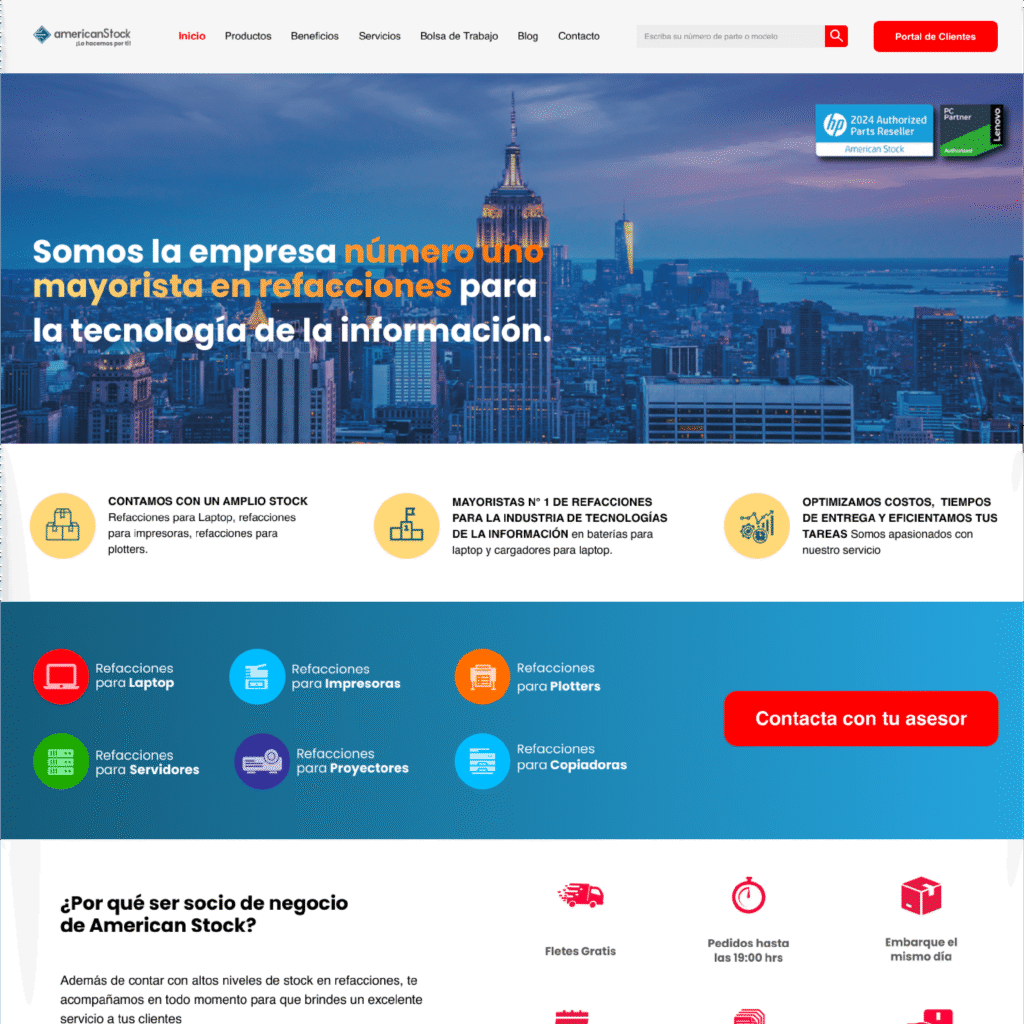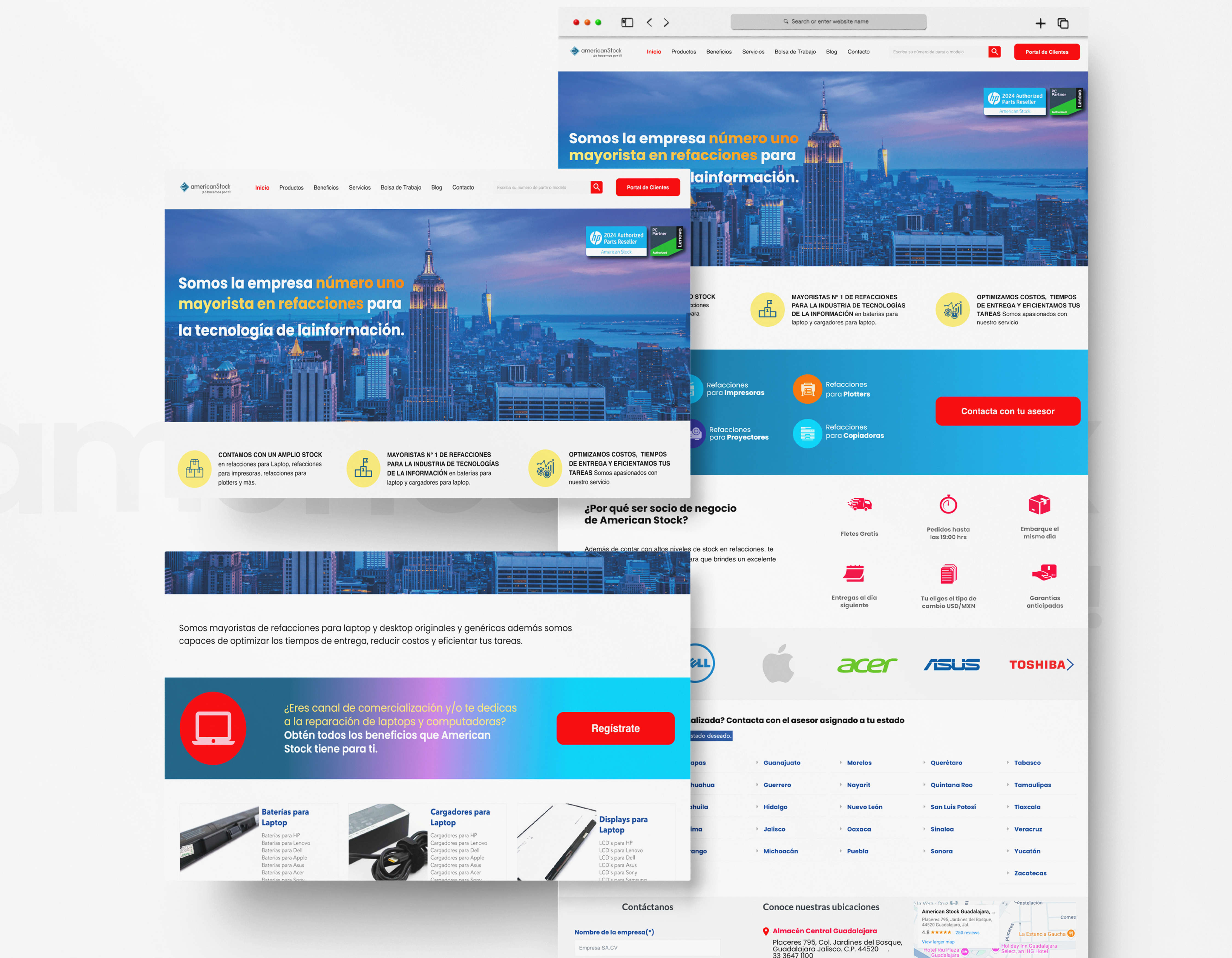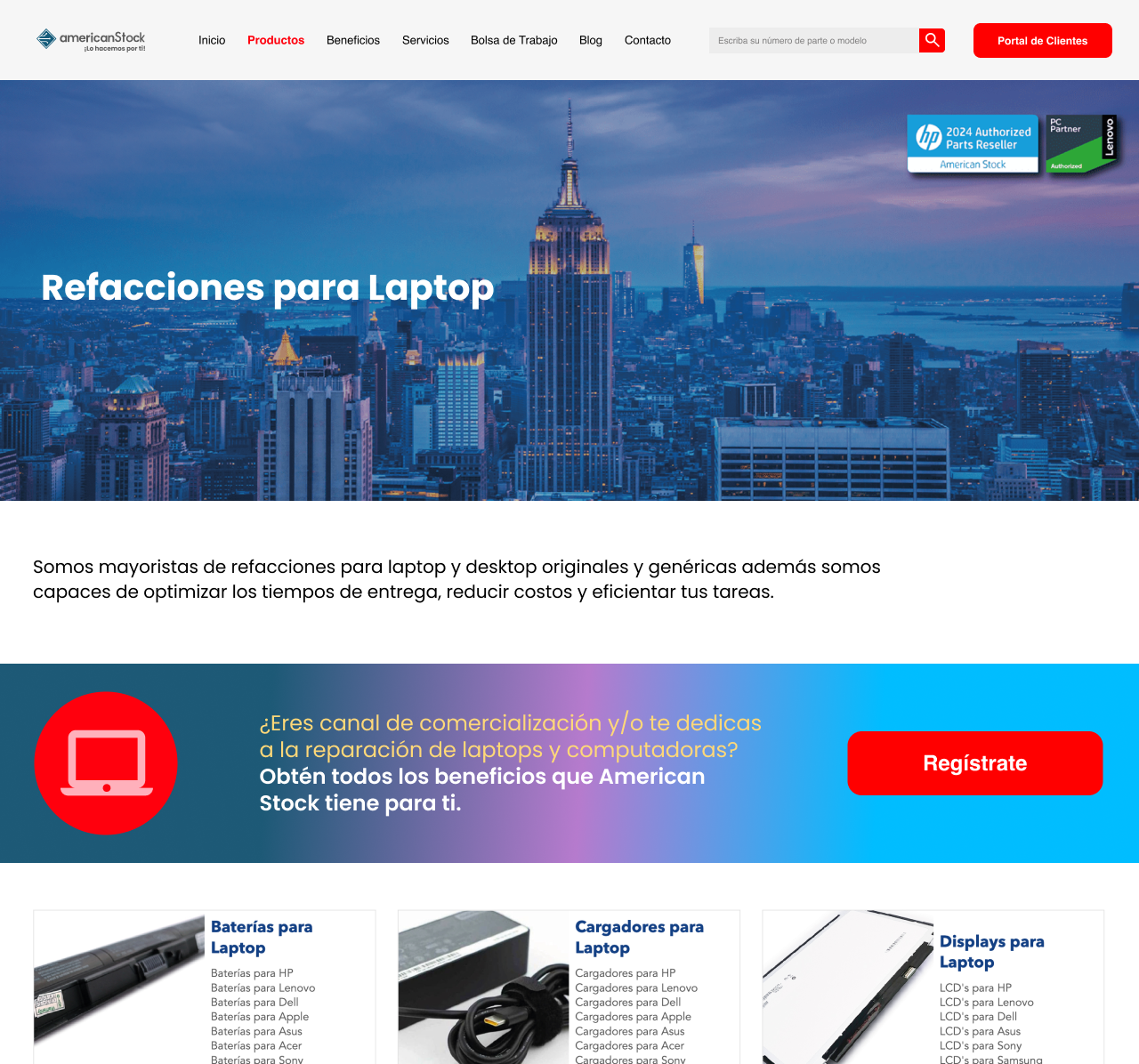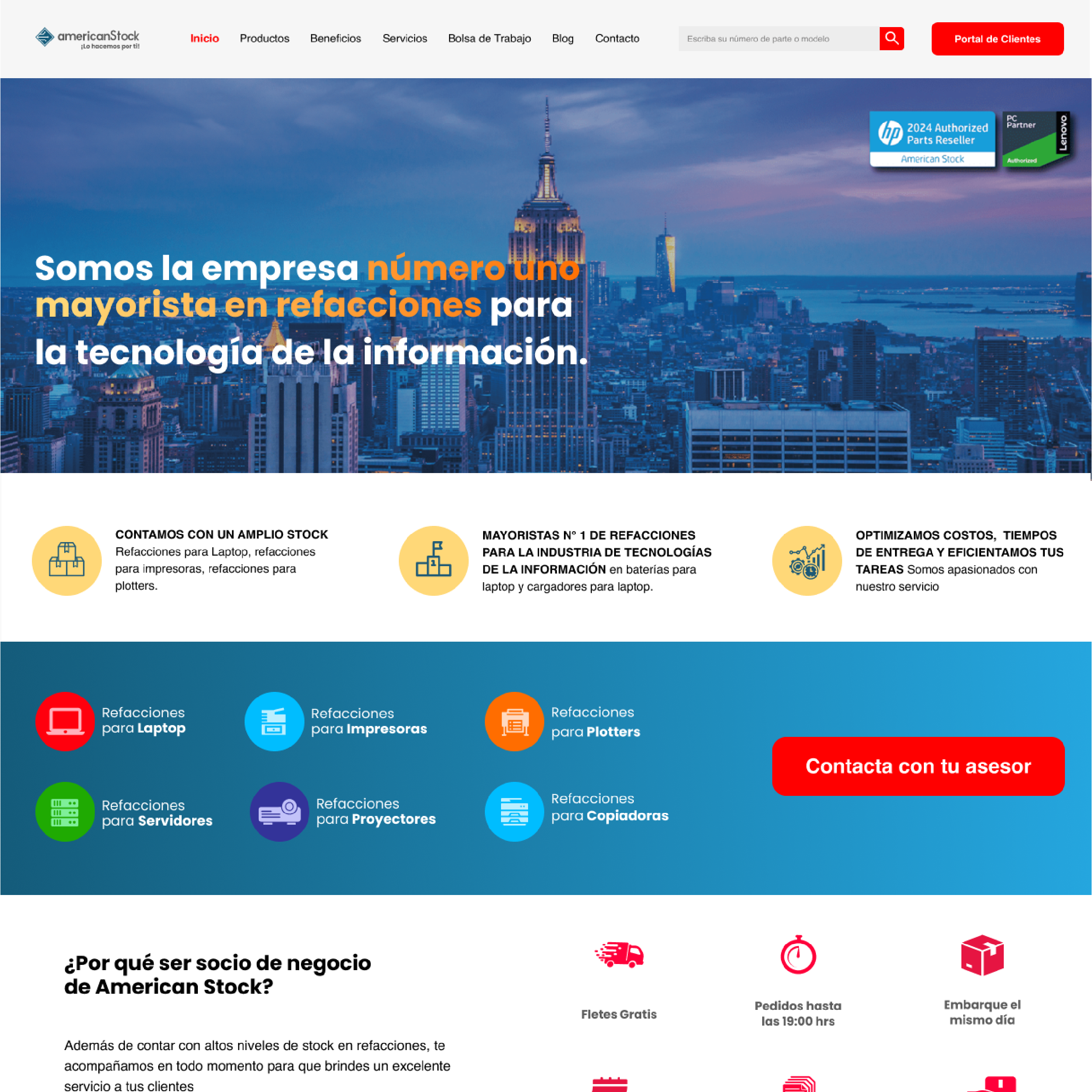Empresa
American Stock
Industria
Technology Retail
Servicios
Web design
Año
2019/2021
Duración
3 years
Rol
Digital Strategist
Metodologías
User-Centered Design, Information Architecture, Component-Based Design
Herramientas
Figma, LottieFiles, Google Analytics



Our approach
- Designed and implemented a design system from scratch
- Established accessibility and usability principles
- Centralized documentation in Figma for cross-team access
- Improved design–dev collaboration through shared workflows
- Defined KPIs to measure adoption and system success
- Trained internal teams to ensure sustainable use
My contribution
By identifying that the original site was misaligned with the company’s B2B focus, I shifted the experience from a casual B2C tone to a more technical, purpose-driven platform. The redesign included a part-number search engine and a new brand identity aligned with the expectations of business clients in new markets.

The Process
Discover
While auditing the existing website and brand presence, I uncovered a core misalignment: the platform was targeting a B2C audience, whereas the company operates within a B2B context. Through stakeholder interviews, competitor benchmarking, and internal feedback sessions, it became clear that this misdirection was impacting usability and undermining trust with key users — mostly procurement professionals and technical buyers. Additionally, the absence of structured documentation and design consistency revealed the need for a scalable system and a clearer internal workflow.
Define
Based on the insights gathered, I proposed a strategic pivot to reposition the brand and product experience. One of the primary functional changes was the implementation of a part number search engine, tailored to the specific behavior of B2B users who often search by SKU or technical reference. Alongside this, I redefined the visual and verbal identity to reflect a more serious, professional tone — aligned with the company’s ambitions to grow in new industrial markets. I also established key performance indicators (KPIs) to measure system adoption, consistency, and cross-team efficiency.
Design
I created a fully customized design system in Figma, built from scratch to reflect the new brand direction and improve scalability across digital products. Accessibility and usability principles were embedded from the ground up, ensuring a solid and inclusive foundation. To improve cross-functional collaboration, I centralized all documentation and design logic into a living Figma file, making it easy for developers, designers, and stakeholders to align. Finally, I trained internal teams to adopt the system effectively, setting the stage for sustainable use and long-term design maturity.
Designing for real teams made all the difference.